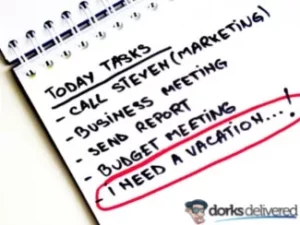Having a positive workplace culture is important when running a business. Without it, your business might not succeed. But how can you build positive workplace culture, especially now that most of us are working from home?
Andre Van Der Merwe from Barclay Recruitment and Verity Consulting shares advice about people and culture in organisations.
What Does a Positive Work Culture Look Like
One of the key indicators of whether you have positive workplace culture or not is whether people actually stay in your organisation. Another one is how many times people smile in a day and how much they interact with each other.
Discretionary Effort
Another indicator is what we call discretionary effort. It is when people stay longer than what they need to in the day and when they do extra things that they don’t need to do but they choose to do them because they believe in what the manager is looking to achieve or they are passionate about where the company is going and they feel that what they’re doing is contributing to that, so they choose to put an extra effort in order to achieve that goal.
How To Create a Positive Workplace Culture
Grant Doyle, who is the managing director at Execforce, heads up leadership and strategy at Verity Consulting. He’ll tell you that everything starts with effective leadership. I definitely have to agree with him.
If you want to improve the workplace culture and reduce churn rate within the business, then it has to start with the leadership team looking at themselves and asking themselves some really hard questions in terms of what are they actually doing that’s causing that?
What Makes People Stay (or Leave)
There’s a company that does a study every seven years across 10,000 companies in 44 countries. They look at what makes people take a job, stay in the job, and leave the job. There’s more to it, but for this conversation, we’ll bring down to these points.
Their boss or leader
Their peers – If they get along with those peers, that comes down to culture.
Being part of something that’s bigger than themselves – Are they actively able to contribute to that and make an impact?
The last results of the study came out two years ago, and in the results seven years prior, money was 5th on the list. Interestingly, in the latest results, money moved from 5th to 7th or 8th on the list of things that make people stay in their job. People, especially Gen Ys and Gen Zs, care less about money these days. For them, it’s more about the common good.
If you’re looking to build positive workplace culture, understand that the culture is set by the leadership team within the business. As a leader, you have got to start asking yourself questions like “What are you doing that’s driving the culture?” and accept the fact that the workplace culture is what it is today because of you 9.9 times out of 10. Are you building something that’s bigger than just having people turn up every day to do their job? Are you inspiring people to work towards and contribute to that?
A survey of senior business leaders from different countries showed a link between automation and employee engagement. Find out how you can help your employees.
How Your Clients Affect Your Workplace Culture

Your customers can impact morale and therefore the workplace culture within the business. But again, it starts with leadership to recognise that and then make the appropriate decisions.
It doesn’t matter where you sit in the organisational structure, how much money you’ve got in the bank, what car you drive, or what suburb you live in. At the end of the day, the one thing we’ve all got in common is our humanity. We’re all human beings, and no human being wants to be treated badly, whether that’s bullying in the workforce or working for somebody who’s rude. As human beings, we’ve all got the same innate needs at a human level. If you look after those things, the rest of it tends to become easy.
Working from Home
I think we need to go back to pre-COVID when working from home has been a thing for a number of years. Most organisations were trying to wrap their head around that and how to balance working from homework and working from the office.
Even before then, there was another trend: offshoring your team. You’d have teams working partly in the Philippines and in Australia. I specifically remember seeing statistics around the big banks having a high volume of customer interactions about setting up funds to support the teams overseas. There was a huge move to have teams working overseas to the point where they almost went too far that way. Those banks moved a lot of those people back into Australia, and they now have balance.
Find balance and remove tedious tasks from your employees’ to-do lists. Talk to a dork about business process automation.
Finding the Balance
Similarly, with working from home, we’ve been trying to find balance for a long time, especially as we move through the different generational changes within a business. With your Gen X and older generations, there was no such thing as working from home. You work longer from the office, and that’s just how it is. You go home to relax.
As a new generation comes in, that’s slowly starting to change. All that COVID has really done is just make that change happen a lot quicker. Because it’s happened a lot quicker, some companies have gone from one extreme to the other extreme where everyone’s working from home all the time because it makes a lot of things easier to cover what needs to be done.
Workplace culture has been heavily impacted. Companies have realised it’s not everyone in the office or everyone working from home. It’s a balance of the two wherever possible.
Interacting Is An Innate Need
We’re still human beings. We want to interact with each other, so how do we actually do that? Zoom’s sales rose by 326% in 2020, which is phenomenal. Profits jumped from $21.7 million in $2019 to $671,000,000 end of last year. Zoom has gone through the roof because people have realised that they want to interact face to face with each other, even if it is from home. We want that connectivity with each other.
We can provide both short-term and long-term top-tier support. Talk to us about your business today!
Does Working from Home Affect Productivity?

Statistically speaking, when we’re working in an office space, we interact with the people at work for around 6 hours a day and you interact with your partner at home for around 3 hours a day. When that shifts because you’re all working from home now, especially if it’s a family where you’ve got both partners working from home, and the home is not set up for work from home and you’re homeschooling your children, which can be an added pressure, the team dynamics shifted significantly. Stress goes through the roof.
Are people more productive at home? It depends. It comes down to a lot of the stuff that Dorks Delivered does to help companies do better, which is having the right working environment.
The most important thing and probably the most obvious one is that if you want to be more productive working from home, you must have an environment that’s conducive to that. That can be converting that spare room, changing the bed to a futon that can fall up and down, putting a desk in there, or getting the right screen.
Next, you also want to have the ability to allocate time to do the work without being interrupted. That’s where it becomes challenging. When you’ve got kids running around, that sort of impacts things as well.
Maintain Balance
I think the work-life balance has shifted in terms of what it means to us these days. I don’t think it’s a work-life balance anymore. I think it’s just life these days, and work is just part of that, along with kids, along with eating, and everything else. It’s around compartmentalising—when am I doing what. In a situation where it doesn’t matter what time of the day you get work done, then that’s great.
Check out the Dollar IT Club! Find the best deals on IT products and services that can help you grow your business.
Do 45-Minute Sprints
It’s also realising that you’re not going to do this piece of work and when you hear that the washing machine is finished, you will stop what you are doing and hang up the clothes and then come back to do the same job. It’s focusing on what you’re doing. Try doing 45-minute sprints.
- Work in 45-minute blocks of time or “sprints.” Focus on what you’re doing for the next 45 minutes until it’s done.
- Take a 15-minute break at the end of each 45-minute sprint. Then, go and do the next thing, which might be either another work topic or maybe something in the house.
- You can have 6 sprints throughout the day (ideally 3 in the morning and 3 in the afternoon).
Cultural Diversity and Positive Culture in the Workplace
I was born in South Africa, so how I answer the question might be taken in different ways by different people. I think Australia is one of the most accepting countries in the world for different races and cultures. I certainly wouldn’t live anywhere else. I think we live in an amazing place that’s very accepting of those cultures, even if you look at politics on an international scale, like how accepting we’ve been to refugees. Now, some people will have a different view on that, and that’s fine.
Unfortunately, whether we admit it or not, we’ve been exposed over the years to different accents, particularly over the phone. Someone calls at certain times pushing certain products—we’re not happy when they call at dinnertime, pretending they’re from Microsoft.
I was talking to my business partner at Barclay Recruitment, Guy Mason, about this just earlier. The amount of spam phone calls and messages we’re receiving has gone through the roof, and you must be seeing the same thing with what you’re doing in IT. Over the years, unfortunately, we’ve developed this stigma or preconceived ideas around receiving phone calls from people with certain accents. I don’t know if that’s politically incorrect to say, but to me, that’s just the reality.
Introduce Your Team to Your Clients
Knowing that it exists at least in Australia, and you want to keep a positive workplace culture, knowing that clients can affect it, how do we then get around it when you are employing somebody that has a certain accent who makes certain phone calls at different times?
Communicate to your customer base and to your potential customer base about your team through social media marketing activities. It can be a focused piece of marketing content around your team members, talking about multiculturalism, which then leads to some lead generation. When they hear about your brand and hear the accent, that kind of puts two and two together. There’s a level of acceptance there and they answer the phone call.
When you go through customer onboarding, it’s extremely important to make sure that there’s a face that’s attached to the material that goes to new customers so that they look past the accent and preconceived ideas and see the bio of your team.
We have some customers who offshore some of their teams to the Philippines. It’s amazing to me that the number of people in the Philippines working for Australian-based businesses is through the roof. They’re highly intelligent, very well-spoken, and articulate individuals.
However, it is when you see the face in front of you whilst you’re talking to them and find out about their background that will make you realise that you’re just dealing with another human being. Bring it back to a human level, regardless of the accent, whether it’s marketing on the front end or it’s sending some collateral switches for the onboarding process.
Ask Andre van der Merwe
I got involved with recruitment many years ago because I thought I wanted to have an impact on the most important and most valuable asset of every business, which is human beings. I started working in recruitment and moved into management consulting because I realised that people not only start a job; whether they stay in a job or leave a job has actually had nothing to do with recruitment. It’s actually got to do with a lot of things, primarily leadership and HR practices, including workplace culture.
The only way to impact leadership and workplace culture is if we’re actually in touch with people who could actually impact those parts of the business. It ultimately leads to having happy humans in your business, making it more productive and profitable.
Everything starts with leadership. The Australian Bureau of Statistics has it on their website that if a business has a poor strategy and inferior product but a good leadership team, they are still likely to be successful or more successful than a company with a fantastic product and easy market conditions but a poor leadership team.
We’ve got Execforce that does a health-check on businesses’ strategy and leadership. We also have Tameka at Bramwell Partners, which is also part of the group, and she does a health check focusing on HR practices as well as the onboarding of teams and different practices that can be put in place to reduce that ramp-up time to get an employee to contribute to the team.
We’ve got a number of tools, from skills testing to personality tests, emotional intelligence test, and IQ test. We choose the tool based on the actual situation. Go to Verity Consulting.
Andre’s Advice
It doesn’t matter where you sit in the organisational structure, how much money you’ve got in the bank, what car you drive, or what suburb you live in. At the end of the day, the one thing we’ve all got in common is our humanity. We’re all human beings, and no human being wants to be treated badly, whether that’s bullying in the workforce or working for somebody who’s rude. As human beings, we’ve all got the same innate needs at a human level. If you look after those things, the rest of it tends to become really easy.











